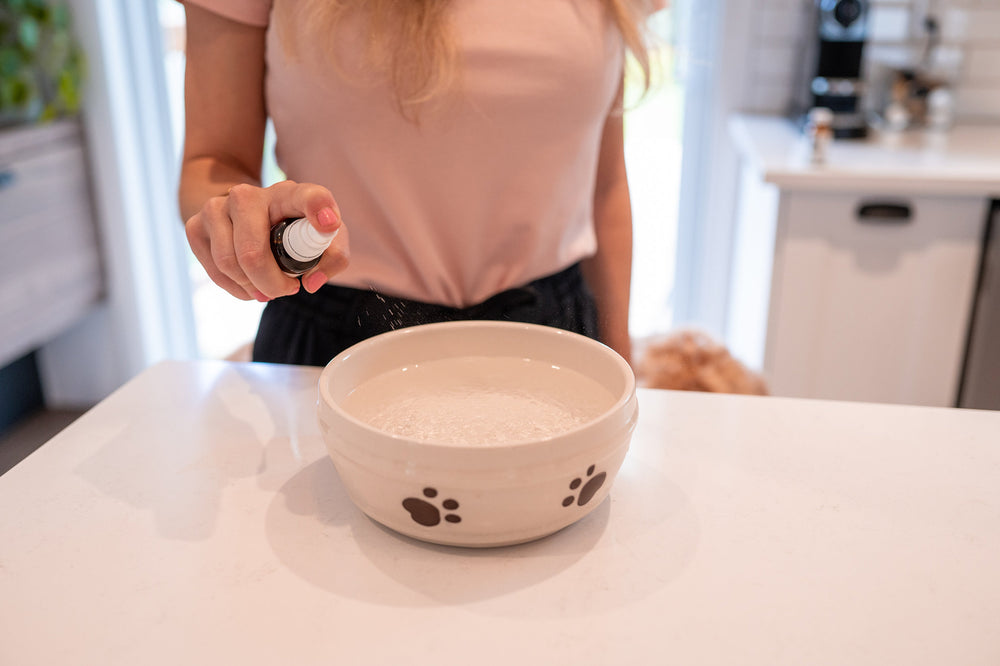How to Fix Separation Anxiety in Dogs: Proven Solutions

Canine separation anxiety is a mental health problem that can significantly affect your dog's quality of life. In addition to causing undesirable behaviors, it is highly likely that your dog's physical well-being will also suffer negative effects in the long run.
What's really interesting is that some pet parents tend to overlook separation anxiety, dismissing it as "just a phase" that their dog will eventually grow out of. However, if puppy separation anxiety is not properly addressed, it will become increasingly severe as your dog grows older.
I've put together this blog post not only to walk you through the factors that contribute to separation anxiety in dogs but also to share simple and practical strategies that can help ease or eliminate this issue. It's important to remember that many dogs suffer from this problem, and it will likely worsen if not properly addressed.
What is Separation Anxiety in Dogs?
At its core, canine separation anxiety is a mental health condition where your dog experiences excessive stress or anxiety when left alone or separated from you.
Despite being completely house-trained, most dogs suffering from separation anxiety tend to exhibit a range of problematic behaviors. These may begin with more manageable issues, such as frequent or excessive barking during the owner's absence, and can escalate to more serious actions like destroying furniture or showing increased aggression towards other pets and humans.
Early management is key for canine separation anxiety
Many pet parents tend to overlook separation-related behaviors until they become more severe. However, in my experience as both a homeopathy expert and a dog mom, separation anxiety in canines can often be alleviated through targeted training sessions when addressed at the earliest signs.
In more severe cases, working with a certified professional dog trainer or veterinary behaviorist becomes necessary to address the separation-related behaviors. It's crucial to emphasize that the chances of successfully modifying an anxious dog’s behavior increase significantly when intervention happens early.
Signs That Your Dog Has Separation Anxiety
Being familiar with the signs of separation anxiety in dogs is crucial for quickly easing their stress and preventing emotional distress. Addressing these issues early can also help avoid more serious health problems, such as digestive issues or behavioral disorders, in your canine family member.
The following are the most common signs of separation anxiety in dogs. It’s essential to start behavior modification strategies as soon as you observe these indicators. Delaying separation anxiety treatment can lead to more severe behavioral or health issues.
- Pacing is a common indicator of separation anxiety in dogs. While it typically involves increased walking in a specific area, some dogs may also display this behavior by moving back and forth along a set path or walking in circles. Because pacing can resemble mere exercise, it's often one of the most overlooked signs of separation anxiety.
- Increased clinginess is another symptom of separation anxiety in canines. While it’s normal for dogs to follow their owners around, this behavior becomes problematic when your dog obsessively follows you from room to room and whines when you leave.
- A sudden change in appetite—either a loss or an increase—can also indicate separation anxiety. While some dogs may show unexplained disinterest in food and drink, others eat more frequently and in excessive amounts. Over time, this can lead to separation-related disorders like malnutrition or obesity.
- Destructive behavior is a common symptom of separation anxiety in dogs. This often involves chewing on furniture such as couches, chairs, or drapes when left alone. In some cases, destructive behavior can also be aggravated by hormonal imbalances. Male dogs may display similar behaviors when looking for a mate, while female dogs may show this when they are in heat.
- Excessive barking and whining are common distress behaviors in dogs experiencing separation anxiety. While these behaviors usually occur when a dog's owner is away, some dogs display them even in the presence of their caregivers. In more severe cases, these anxious behaviors can escalate to unwanted aggression.
- Another separation-related behavior to watch for is urinating or defecating indoors or in unusual places. While occasional accidents can happen, anxious dogs tend to have them more frequently. Although these incidents may be a way of seeking attention, they are often also linked to the physiological effects of separation anxiety.
- Repeated escape attempts can also be a sign of separation anxiety in dogs. While some young dogs may try to escape during crate training, it becomes a concern if your dog consistently attempts to escape. This behavior often intensifies when the owner leaves or is absent for long periods.
- In cases of extreme stress and anxiety, some dogs may engage in self-injurious behaviors. This often involves excessive licking, biting, or pawing of body parts such as the paws, legs, ears, or belly. These behaviors may also be accompanied by destructive chewing or biting of objects.
These are some of the common indicators of dog separation anxiety that I’ve observed over the years, though other behaviors may also arise when this mental health issue is present. Behavior modification strategies, such as positive reinforcement training or consulting a professional, should be implemented as soon as you notice these signs.
Possible Causes of Your Dog's Separation Anxiety

Separation anxiety doesn’t develop in isolation. Key factors contribute to its onset in your pet. While the dynamics of owner presence and absence play a major role, other factors must also be considered to fully understand this condition.
The following factors are common contributors to canine anxiety. In addition to contributing to separation anxiety, they can lead to other unwanted behaviors over time. Familiarity with these risk factors will help you address the issue effectively and prevent further behavioral problems.
Age and breed
Contrary to popular belief, separation anxiety is not exclusive to young dogs. Juveniles and even senior dogs can also suffer from this common canine mental health issue. In fact, separation-related behaviors—such as excessive barking, destructive chewing, or pacing—can manifest in dogs of any age, sex, or breed.
Some dog breeds are more prone to separation anxiety than others, including Chihuahuas, French Bulldogs, Labrador Retrievers, German Shepherds, Border Collies, Pomeranians, and Miniature Schnauzers. Owners of these breeds should be particularly mindful of potential signs of anxiety.
Additionally, older dogs that are already comfortable with their family and environment can become more vulnerable to mental health issues, such as Cognitive Dysfunction Syndrome (CDS), also known as Canine Cognitive Disorder (CCD), as they age. If separation anxiety is not addressed early, it may exacerbate the cognitive decline that some senior dogs experience.
A new pet or family member
Many dogs tend to develop separation anxiety when strangers—whether humans or other pets—are suddenly introduced into their home environment. This can lead to feelings of insecurity and jealousy, ultimately resulting in excessive attachment to their owner.
Dogs often perceive a new human or pet as competition for their owner's attention. They may also view these newcomers as rivals for important resources such as food and water. Interestingly, even a newborn baby can trigger this response, as the dog may notice the shift in attention and care.
On the other hand, the loss of a family member can cause your pet to become anxious. Whether due to death, a person moving out, or even divorce, domestic dogs are deeply attuned to family dynamics. Any sudden absence or change can trigger separation anxiety. If this is not addressed, you may soon notice problematic behaviors such as excessive vocalizing, chewing, or restlessness.
Lack of physical contact or mental stimulation
In my years as an animal homeopathy expert, I have encountered many pets suffering from neglect or frequently enduring their owner's prolonged absence. For a dog, this lack of physical and mental stimulation can lead to feelings of insecurity and diminished well-being.
As I mentioned earlier, separation anxiety develops gradually, often due to a lack of proper social interaction, especially play and exercise. Even simple activities, such as a game of hide and seek or using food-stuffed puzzle toys, can work wonders in preventing anxiety in canines.
Most dogs, especially those kept indoors, will likely seek ways to entertain themselves. If they become extremely bored, they are likely to develop anxiety and may resort to undesirable behaviors such as excessive whining or destructive nipping.
Total change of environment
There is always a reason why an anxious dog behaves this way. One of the major factors contributing to this behavioral issue is a sudden and complete change in their environment. Dogs are creatures of habit and tend to feel secure when they are accustomed to a familiar place or routine.
Once displaced from their familiar environment, dogs may develop separation anxiety, fearing they are being abandoned or left to fend for themselves. The loss of the routine and familiarity they’ve grown to love only deepens their distress.
It's important to note that your dog's tolerance to a change in environment can vary. However, sudden displacement often makes pets more prone to anxiety.
Sudden absence of primary caregiver
If you're like most pet parents, you've likely already established a strong bond with your dog. You understand your pet's likes and dislikes through your shared interactions over time, and you probably have a good sense of how your dog reacts to different activities as well.
Given that dogs are creatures of habit, they can be significantly affected if they lose their primary caregiver or the people they have grown emotionally attached to. While short absences may not cause distress, a sudden departure from your pet's life can have a severe emotional impact.
Dogs with separation anxiety often have lost a significant person in their life. This can lead to feelings of confusion, distress, and ultimately, hopelessness. These emotions may trigger the onset of separation anxiety, which needs to be addressed promptly to prevent further behavioral issues.
Previous abandonment or traumatic experience
Just like humans, dogs can be severely affected by trauma. Beyond physical injuries and pain, emotional and psychological trauma can also leave a lasting impact on your pet. If not properly addressed, this can lead to separation anxiety and destructive behaviors, such as excessive chewing or barking.
In my experience as an animal homeopathy expert, severe medical problems involving excruciating pain can be considered traumatic for dogs. Similarly, serious injuries like fractures, arthritis, neuropathy, and complications from diabetes can also have a traumatic impact.
As I have stressed earlier, losing a primary caregiver can lead to anxiety in dogs. While short absences typically do not cause distress, suddenly losing someone special due to death, divorce, or other circumstances may feel like abandonment to your pet.
Incomplete house training
One often overlooked risk factor for canine separation anxiety is incomplete house training. Patience, commitment, and determination are crucial when training a dog. If house training is inconsistent or incomplete, it can disrupt the dog's routine, which may lead to increased anxiety or stress.
Besides teaching your dog to urinate and defecate at set times and in designated places, house training also involves establishing clear routines for where your pet sleeps, eats, and grooms. When an owner's departure is sudden or inconsistent, it can further disrupt these routines, often leading to separation anxiety.
Lack of proper socialization
Dogs that are not properly socialized at a young age will display two key anxiety-related behaviors: over-dependence on pet parents and fear of new experiences. Interestingly, these behaviors can persist even into a dog's senior years if not properly corrected.
Without proper socialization, your dog will likely be wary of other pets and humans, relying solely on you for security and comfort. Without the right behavior modification training, separation anxiety can develop over time.
Moreover, a dog that has not been properly socialized will almost always feel fearful, regardless of how nice or welcoming a person, another pet, or a certain place is. It will tend to be afraid and will likely cling to its human caregivers.
Presence of health issues
A sick dog often feels vulnerable, especially when dealing with cognitive decline, neurological conditions, hormonal imbalances, or chronic pain. It's not uncommon for a dog experiencing illness to have panic attacks—varying in intensity—at unexpected times during their sickness.
If this vulnerability isn't addressed properly, it can progress into separation anxiety. Unfortunately, this added anxiety can also worsen your pet's overall health and hinder their recovery.
These are some of the most common risk factors for canine separation anxiety to keep in mind. While occasional panic attacks in dogs are not unusual, failing to address these risk factors can lead to long-term behavioral problems.
It is crucial to contact a pet wellness expert or veterinary behaviorist as soon as you notice signs of anxiety or separation-related behavior. As I mentioned earlier, the chances of successfully modifying a dog's behavior affected by separation anxiety are much higher if addressed early.
Is Anti-Anxiety Medication Essential for Treatment?
Contrary to popular belief, conventional anti-anxiety medication is not always necessary to treat a dog suffering from separation anxiety. Surprisingly, many dogs can often eliminate unwanted behaviors triggered by separation anxiety through positive reinforcement training.
Positive behavior modification can be achieved through natural means.
What's particularly interesting about positive behavior modification training is that it can be done in a natural, non-medicated way. Think of it as similar to crate training or helping your dog establish a consistent bathroom routine. Rushing to drug therapy not only risks aggravating the issue but also exposes your dog to potential adverse side effects.
10 Simple and Practical Methods in Treating Separation Anxiety in Dogs

If you're noticing that your dog is showing signs of separation anxiety, there are some practical strategies you can use to help address this issue. I’d like to emphasize that while these methods may seem simple, you will need plenty of patience and commitment to see the process through.
#1. Soothe your dog's anxiety with gradual desensitization.
Gradual desensitization involves slowly increasing the time your dog spends alone until they feel comfortable being left on their own. Start by leaving your dog alone for just a few minutes, then gradually increase the duration as they become more confident.
This can be done by leaving your pet alone for very short periods, such as 5 minutes, and then gradually increasing the duration over time. In addition to easing separation distress, this process helps condition your dog to understand that being alone is safe and nothing negative will happen.
I highly recommend diverting your dog's attention to constructive activities, such as puzzle toys or treat-dispensing toys, which can help alleviate boredom and anxiety. Since canine anxiety often stems from boredom and feelings of abandonment, providing mental stimulation can be an effective way to reduce stress.
#2. Alleviate separation-related behavior by creating a safe space.
Anxiety and separation-related behavioral issues often arise when a dog feels alone or abandoned in its environment. Creating a designated safe space, such as a quiet area with familiar toys or bedding, and introducing it as your dog's own personal space can help alleviate these feelings.
This could be anything from a room to a special spot in the corner of the porch or kitchen where your dog can feel relaxed and comfortable while waiting for you to return from work or other activities.
I highly recommend outfitting this space with essentials like food, water, toys, a bed, and a blanket to make it extra comfortable. You can even leave a used shirt with your scent to help your pet feel calm.
#3. Giving your pet a workout before leaving can help alleviate dog separation anxiety.
In my experience as an animal homeopathy expert, I've found that canine anxiety is often triggered by excess energy. Engaging your dog in regular exercise, such as walks or playtime, can help keep anxiety at bay. A tired dog is less likely to feel worried or anxious.
The type of exercise your dog needs depends on its age and preferred activities. While you can engage a puppy or juvenile dog in more vigorous exercise, opt for low-impact activities like short walks or gentle play for older dogs to avoid injury.
I personally recommend games like hide and seek, fetch, and tag when exercising your dog. These activities not only help release physical energy but also provide much-needed mental stimulation, which can help prevent separation-related behavioral issues.
#4. Long farewells may develop separation anxiety in dogs.
Did you know that separation distress in dogs can be triggered by exaggerated departure cues from their owners? This means avoiding excessive excitement when leaving or returning home. Dogs with separation anxiety often become overly anxious when their caregivers unintentionally signal that they will be left alone for a long time.
Make sure your departures are calm and brief. When you return, greet your dog in a relaxed manner to subtly reinforce that nothing bad happened while you were away. This approach helps condition your dog's mind to remain calm during your absence.
#5. Creating a consistent routine can help stabilize your dog's behavior.
If you're like most dog parents, you probably already know that dogs are creatures of habit. They thrive on routine and can experience issues, particularly anxiety, if that routine is unexpectedly disrupted. This includes everything from meals and exercise to playtime and bathroom habits.
It's important to note that once you establish a routine with your dog, you need to stick to it consistently. If the routine needs to change unexpectedly, gradually introduce the modifications to avoid any issues. Remember, dogs take time to adjust to changes in their routine.
#6. Puzzle toys can help ease dog separation anxiety.
What's great about puzzle toys is that they serve two key functions: first, they help divert your dog's attention from anxiety, and second, they provide mental stimulation. You can even encourage your dog to problem-solve by giving it a food-stuffed toy.
You can expect different ways your dog might engage with puzzles. As naturally inquisitive creatures, dogs will try to figure out how to get the most out of these toys. While keeping them occupied, you’re also helping prevent unwanted behavior.
While this is just my personal opinion, I believe that immediately resorting to drug therapy may prevent your dog from fully engaging its cognitive abilities. Instead, you can integrate puzzle toys into your pet's training sessions for an added mental boost.
#7. Short absences can be a useful tool for behavior modification.
Separation-related behavior is often triggered by prolonged or exaggerated interactions when owners leave the house. While it's natural for us to be away for work and other responsibilities, it's crucial to train your dog to remain calm and independent during these absences.
This is why it's important to teach your dog to be confident even when alone, starting with short absences. You can gradually increase the time you're away. One way to do this is by engaging your dog in an activity it can do by itself. I highly recommend using a puzzle toy stuffed with food or another activity that allows your dog to search for treats.
#8. Incorporating calming aids can help manage or eliminate your dog's anxiety.
Panic attacks in dogs with separation anxiety can range from mild to severe. While some may experience brief bouts of anxiety, others may go through longer or more frequent episodes. This is why having calming aids on hand—such as calming chews, anxiety wraps, dog appeasing pheromone sprays, or natural remedies—can be beneficial if your pet is struggling with separation anxiety.
#9. Using punishment won't cure separation anxiety.
One of the key lessons I've learned as an animal homeopathy expert is that punishing your dog for accidents during an anxiety episode will not help—it will only worsen the anxiety. Just like in humans, punishing someone during a panic attack won't resolve the issue. Instead, staying calm and offering reassurance is far more effective.
#10. Dogs suffering from separation anxiety can benefit from professional help.
There may be times when the issue requires professional help. If you feel you can't manage the problem on your own, consider reaching out to a certified applied animal behaviorist, a veterinarian, or a dog trainer who specializes in anxiety. The sooner you do this, the better your chances of preventing separation-related tendencies from worsening.
Surprising Fact: Canine Separation Anxiety Can Harm Their Immune System
Anxiety in canines isn’t just a mental health issue—it can also significantly impact your dog physically. Extreme stress and anxiety can lead to hormonal imbalances and a weakened immune system, making your pet more vulnerable to diseases and illness.
Zumalka's SILVERPET is formulated with colloidal silver to help strengthen the immune system and support natural healing, either as a standalone remedy or alongside medical treatment. SILVERPET can be administered both internally and externally to enhance the body's natural healing functions.
It combats over 650 types of germs and effectively destroys harmful bacteria, including antibiotic-resistant strains, all without any side effects. When separation anxiety strikes, having this premium natural product in your pet care toolkit can be a valuable advantage.







Thank you for sharing the blog related to separation anxiety in dogs. I felt some symptoms in my dog. I think I need to take attention to my dog more. I appreciate your tips.
What i do is exercise my dog at least 30 minutes before i leave the house. Just like us the human, when we get tired, we need rest. so a tired dog will quickly go into a resting mode that will relax your dog and divert its attention to either food or sleep
If I am lack of time to exercise my dog, before I leave the house, I will get items or clothes that have my smell for my dog in advance. Just before I leave the house, play specialized soothing dog music (https://cutt.ly/5wzhVx) that helps my dog to relax and slowly fall asleep
Hope the above help
Thank you for this separation anxiety. My almost 7 years old whippet. She gets pre anxiety when I get ready to leave the house.. At home very anxiety ridden, follows me until I do leave. I feel terrible I hurt my baby. She looks so sad. My home is dysfunctional and effects her. I live her so much. She was lost 2 years ago. My son lost her in a store parking lot. List 4 nights, I found her 5 days later. Thank you, this is a very sad situation. She will be seeing her vet soon. Will discuss this with her. My cat is the best.
When I go up to bed my dog cries until I come down to her. We have space saver stairs so she can’t come to bed with me.
hi thanks for the information :)
Leave a comment